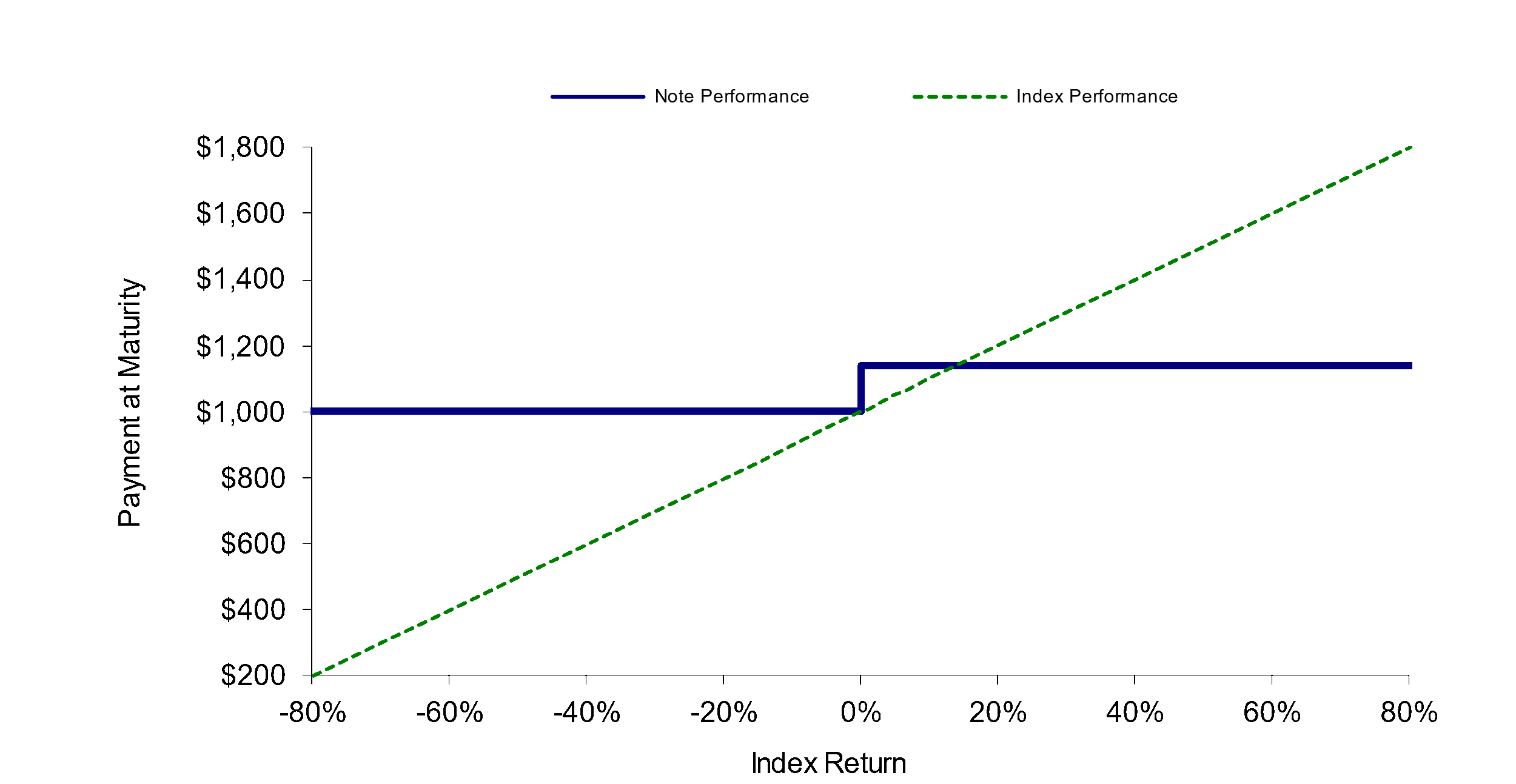could delay the calculation of the level of each Portfolio Constituent and could adversely affect the level of each Portfolio Constituent and the Index and any payments on, and the value of, your notes.
●AN INCREASE IN THE MARGIN REQUIREMENTS FOR THE UNDERLYING FUTURES CONTRACTS INCLUDED IN THE PORTFOLIO CONSTITUENTS MAY ADVERSELY AFFECT THE LEVEL OF THAT PORTFOLIO CONSTITUENT —
Futures exchanges require market participants to post collateral in order to open and keep open positions in the Underlying Futures Contracts. If an exchange increases the amount of collateral required to be posted to hold positions in the Underlying Futures Contracts, market participants who are unwilling or unable to post additional collateral may liquidate their positions, which may cause the price or liquidity of the relevant Underlying Futures Contracts to decline significantly. As a result, the level of the relevant Portfolio Constituent and the Index and any payments on, and the value of, the notes may be adversely affected.
●THE INDEX MAY IN THE FUTURE INCLUDE UNDERLYING FUTURES CONTRACTS THAT ARE NOT TRADED ON REGULATED FUTURES EXCHANGES —
The Index, through its exposure to the Portfolio Constituents, is currently based solely on futures contracts traded on regulated futures exchanges (referred to in the United States as “designated contract markets”). If these exchange-traded futures contracts cease to exist, or if the calculation agent for the Portfolio Constituents substitutes an Underlying Futures Contract in certain circumstances, the Index may in the future include futures contract or over-the-counter contracts traded on trading facilities that are subject to lesser degrees of regulation or, in some cases, no substantive regulation. As a result, trading in such contracts, and the manner in which prices and volumes are reported by the relevant trading facilities, may not be subject to the provisions of, and the protections afforded by, the U.S. Commodity Exchange Act, or other applicable statutes and related regulations that govern trading on regulated U.S. futures exchanges or similar statutes and regulations that govern trading on regulated non-U.S. futures exchanges. In addition, many electronic trading facilities have only recently initiated trading and do not have significant trading histories. As a result, the trading of contracts on such facilities, and the inclusion of such contracts in the Index, through its exposure to the Portfolio Constituents, may be subject to certain risks not presented by the Underlying Futures Contracts, including risks related to the liquidity and price histories of the relevant contracts.
●NEGATIVE ROLL RETURNS ASSOCIATED WITH THE UNDERLYING FUTURES CONTRACTS CONSTITUTING THE PORTFOLIO CONSTITUENTS MAY ADVERSELY AFFECT THE PERFORMANCE OF THE PORTFOLIO CONSTITUENTS AND THE VALUE OF THE NOTES —
The Portfolio Constituents each reference Underlying Futures Contracts. Unlike common equity securities, Underlying Futures Contracts, by their terms, have stated expirations. As the exchange-traded Underlying Futures Contracts that compose the Portfolio Constituents approach expiration, they are replaced by similar contracts that have a later expiration. For example, an Underlying Futures Contract notionally purchased and held in June may specify a September expiration date. As time passes, the contract expiring in September is replaced by a contract for delivery in December. This is accomplished by notionally selling the September contract and notionally purchasing the December contract. This process is referred to as “rolling.” Excluding other considerations, if prices are higher in the distant delivery months than in the nearer delivery months, the notional purchase of the December contract would take place at a price that is higher than the price of the September contract, thereby creating a negative “roll return.” Negative roll returns adversely affect the returns of the Portfolio Constituents and, therefore, the level of the Index and any payments on, and the value of, the notes. Because of the potential effects of negative roll returns, it is possible for the value of a Portfolio Constituent to decrease significantly over time, even when the near-term or spot prices of the underlying assets or instruments are stable or increasing. In addition, interest rates have been historically low for an extended period and, if interest rates revert to their historical means, the likelihood that a roll return related to any Portfolio Constituent will be negative, as well as the adverse effect of negative roll returns on any Portfolio Constituent, will increase.
●OTHER KEY RISKS:
oTHE INDEX, WHICH WAS ESTABLISHED ON MARCH 23, 2021, AND THE PORTFOLIO CONSTITUENTS, WHICH WERE ESTABLISHED ON DECEMBER 22, 2020, HAVE LIMITED OPERATING HISTORIES AND MAY PERFORM IN UNANTICIPATED WAYS.
oTHE INDEX COMPRISES NOTIONAL ASSETS AND LIABILITIES. THERE IS NO ACTUAL PORTFOLIO OF ASSETS TO WHICH ANY PERSON IS ENTITLED OR IN WHICH ANY PERSON HAS ANY OWNERSHIP INTEREST.
oTHE NOTES ARE SUBJECT TO SIGNIFICANT RISKS ASSOCIATED WITH FIXED-INCOME SECURITIES, INCLUDING INTEREST RATE-RELATED RISKS AND CREDIT RISK.
Please refer to the “Risk Factors” section of the accompanying underlying supplement for more details regarding the above-listed and other risks.



